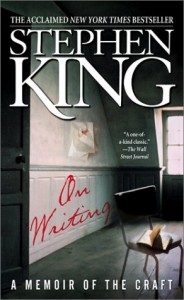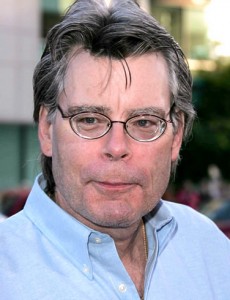The Book Challenge
Three years ago, as a lark, I challenged my friends, family and co-workers to try and read as many books as they could in a calendar year. The idea was to encourage reading more and better books and broaden literary horizons.
As a group we laid out some general guidelines:
- Reading for work or for school doesn’t count. Books shouldn’t be assigned, but chosen for fun.
- Any book counts, as long as it’s for ages 9-12 or up. This designation was to allow for the Harry Potter books which fall into that age category.
- If you’re learning a new language books written for younger children count too.
- Graphic novels, plays, and poetry all count.
The Book Challenge, as it came to be called, was all about setting reading goals. Most people settled on 50 books per year (a book per week with two weeks of vacation). Smaller goals were also encouraged like “10 of my 50 books will be poetry,” or something to that affect. My personal caveat is that I only count 10 graphic novels per year. Otherwise I'd only read comics.
It’s been a pretty big success, with monthly reads discussed on our Facebook group. (Please, feel free to join!) Most people take it on as a New Year’s Resolution, but we have people coming and going all the time.
In part, the Book Challenge is popular because, unlike a book club, the reading isn’t assigned and you can move at your own pace. Also, it’s reassuring to see other avid readers apologize for not being able to read books for months at a time.
Last year I completed just 29 books, a disappointment since I’d planned on doing a full 50. But now that I’m done school I feel that I can definitely reach that golden mark.
I’m off to a good start as well, getting through four books in the month of January:
- On Writing by Stephen King
- Captain America: Winter Soldier vol. 2 by Ed Brubaker and Steve Epting
- Gretzky’s Tears by Stephen Brunt
- Satchel Paige: Striking Out Jim Crow by James Sturm and Rich Tommaso
Personally, I’ve found that the Book Challenge keeps me focused on maintaining on an ongoing reading list and motivated to keep plowing through it. And as Run DMC said, “From the front to the back, as pages turn, reading is a very fresh way to learn.”
Graphic Novel Review: Captain America: Winter Soldier vol. 1 & 2
One of my New Year’s resolutions was to read more comic books and graphic novels. Hardly a self-improvement project, I know, but I want to get down with my nerd self.
My first graphic novel of 2010 is Captain America: Winter Soldier vol. 2, allowing me to complete the first story arc of Ed Brubaker’s popular run on one of Marvel Comics’ most recognizable characters.
I’ve never been much of a Captain America fan. I prefer grittier characters like Batman or the Punisher, so his squeaky clean image never appealed to me. And since I’m Canadian, all the patriotic beats were lost on me.
But Brubaker’s Winter Soldier storyline sucked me in. I’d heard that the new Captain America series was going to be bringing back Bucky, a character who had been dead since the end of World War II, and it hooked me.
This was a Big Deal to comic fans. Bucky had been Cap’s 16-year-old sidekick during the war, but was tragically killed when a missile he was trying to disarm exploded in mid-flight. The same incident dropped Cap into the frigid North Sea, freezing him until the 1960s.
The death of Bucky had always been cited as the reason why Marvel’s superheroes don’t have teenaged sidekicks - unlike their DC counterparts - and it added a sense of realism to the company’s mythos.
For Brubaker to be retconning a fundamental element of Marvel Comics seemed like heresy, albeit an intriguing act of rebellion.
Captain America: Winter Soldier Book One and Two brings together issues 1-14 of the fifth monthly series to star Steve Rogers. They revolve around a terrorist attack that was apparently perpetrated by a mythical Cold Warrior known as the Winter Soldier who may actually be Cap’s former partner Bucky.
Resurrection storylines have become commonplace in comics, a constant recycling of characters who had been killed for dramatic effect, only to return. It’s a trend that is holding back a medium that I love. But Brubaker handles the return of the long-dead hero with a deft hand that provides not just a plausible explanation for his survival, but an engrossing story.
Interspersed with action, character moments and plot developments, Winter Soldier begins with Captain America becoming angry and frustrated with the inability of the United States government to attack countries that sponsor terrorism. The detonation of a Weapon of Mass Destruction in Philadelphia leaves a trail that leads to former Soviet general Aleksander Lukin, and his shadowy operative the Winter Soldier.
Even the name Winter Soldier is clever work by Brubaker. It’s a reference to the loyal American revolutionaries who stuck with George Washington over the harrowing winter in Valley Forge, but also to the Winter Soldier Investigation, a Viet Nam era examination of atrocities and war crimes committed by the United States Armed Forces.
Brubaker seamlessly connects the Second World War, the Cold War, modern terrorism and Captain America’s complex continuity. It’s not just that he brings in plot points from every era of Cap’s 70 years of existence, but the pacing and style of the book draws heavily on these aspects of the character’s history.
To me, a classic Captain America story has him and a partner rushing off into danger to stop a catastrophe from befalling the United States or the world. Winter Soldier is no different, with Cap rushing to stop Kronas Corporation with the Falcon riding shotgun.
Steve Epting’s art work in this series is fantastic. I can’t think of a current comics creator who makes better use of inking and colouring techniques. His characters are expressive and natural in conversation, and dynamic and fun during action scenes.
In particular, the way he draws the acrobatic Captain America jumping, rolling and bouncing in fight scenes is thrilling.
Winter Soldier breaks an old comic fan saying: “No one stays dead, except Bucky and Uncle Ben.” The phrase refers to the fact that Peter Parker’s uncle and Captain America’s sidekick must stay dead because their loss is what, in part, forms the hero we know today.
I never thought I’d see the day where that axiom was successfully reversed, but the Winter Soldier saga does it.
The return of James “Bucky” Buchanan Barnes was enough to catch my interest and buy the first volume of Captain America: Winter Soldier, and the gripping story has lead me to the rest of the series. Brubaker’s writing isn’t some gimmick. It’s some of the best mainstream superhero comic work I’ve ever read.
Book Review: On Writing by Stephen King
 Stephen King’s On Writing is one of the best books I’ve read on how to become a writer. Not necessarily a professional scribe, but how any author can hone their craft until their work becomes readable and entertaining.
Stephen King’s On Writing is one of the best books I’ve read on how to become a writer. Not necessarily a professional scribe, but how any author can hone their craft until their work becomes readable and entertaining.
On Writing is full of King’s wit and charm as he explains how he builds his stories from the ground up. His encouraging voice is directed at fiction writers at the start of their careers, but his advice can be applied to anyone who wants to pursue their creative passion.
The book is divided into four parts: C.V., Toolbox, On Writing and then On Living.
C.V. is a short memoir that focuses on King’s life. As King says in the introduction: “This is not an autobiography. It is, rather, a kind of curriculum vitae – my attempt to show how one writer was formed,”
Some of the moments are tough to get through, particularly King’s upsetting history of drug and alcohol abuse. Fortunately, the entire section is spiked with his self-deprecating humour. Any fan of King’s work will enjoy reading this portion of the book.
Toolbox discusses the skills that every writer needs to be readable. Things like grammar, vocabulary, form and style. It’s the shortest part of the book, but still important and King, a former high school English teacher, makes it as entertaining as anyone could hope.
On Writing is the real meat of the book, where King explains how young writers should put their skills to good use. His ideas about drafting, story composition and research are all informative. In particular, I like how blue collar he is in his approach.
“[I]f you don’t want to work your ass off, you have no business trying to write well – settle back into competency and be grateful that you have even that much to fall back on,” King says in the introduction to the section.
According to King, his theories about writing and what it takes to succeed as an author are not popular with certain literary circles, but they appeal to me. Not just because it means there’s hope for the novice writer, but because I think that analyzing and honing one’s craft (whatever it may be) is the best way to succeed in any field. To see it applied to writing by one of the most widely read authors of the 20th century only confirms this.
The entire tone of the book is light-hearted and informal, with King making funny asides and offering insight and commentary about his canon, as well as the work of an array of authors including Cormac McCarthy, Ernest Hemingway, Tom Wolfe, Elmore Leonard and H.P. Lovecraft.
In On Living, the book’s postscript, King recounts the events surrounding the car accident that nearly took his life during the composition of On Writing. I say ‘surrounding’ because he can’t remember the actual event – his head smashing through the oncoming windshield of a van took care of that.
It’s the most moving part of the book, and possibly the most stomach-turning writing of King’s accomplished career. His description of what happened to his body, particularly his right leg which was broken into “so many marbles in a sock”, literally had me squirming on my couch.
On Writing will appeal to two groups of people: Stephen King’s fans will be attracted to the C.V. and On Living sections where they can learn about their favourite author. Aspiring novelists will prefer the Toolbox and On Writing sections for King’s insight into his craft.
For everyone else though, it can still be a quick, fun read that will make them think twice about Stephen King and the art of writing.
